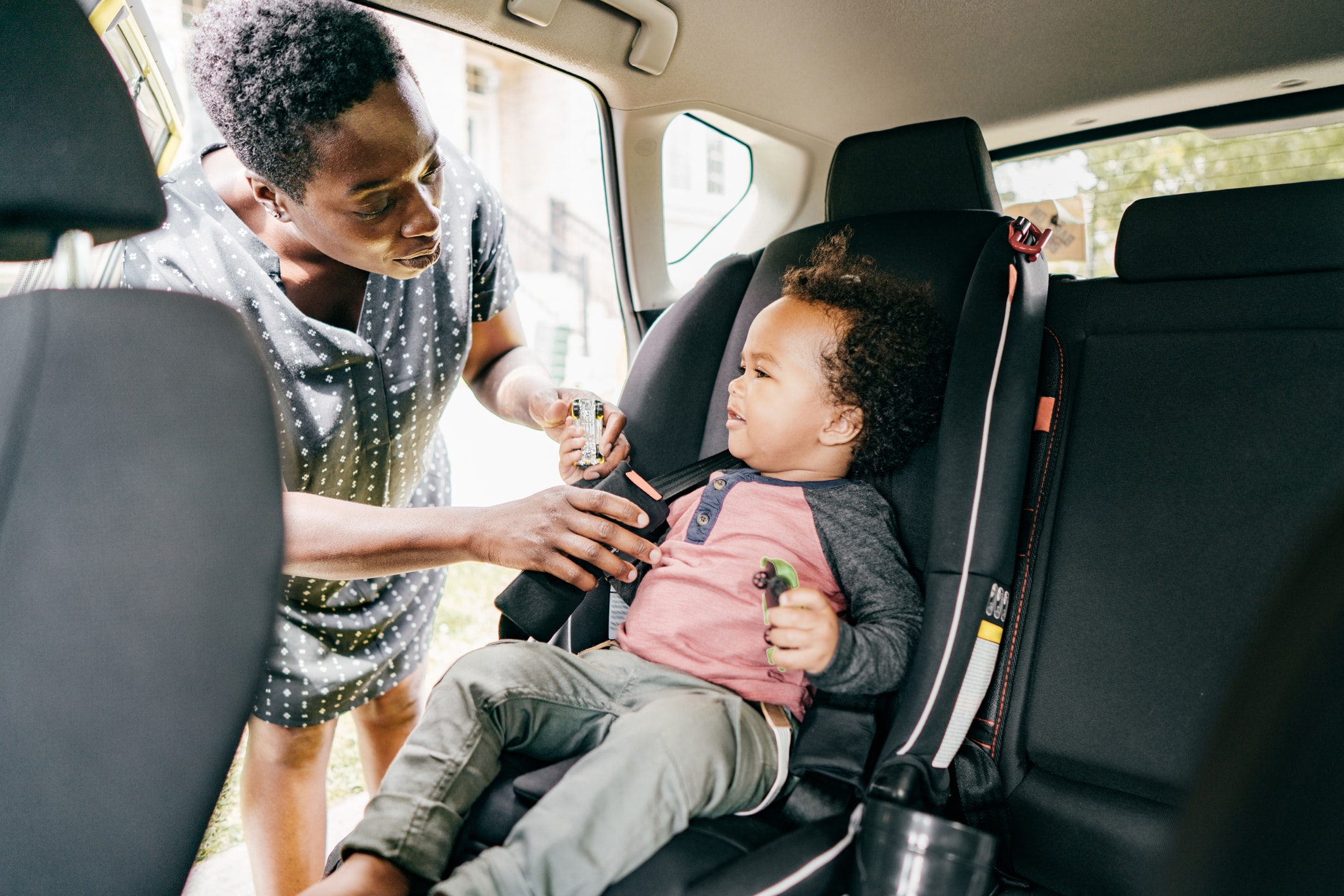Chain | Cohn | Clark Helps Educate You on Booster Seat Laws
May 16, 2022 | Article by Chain | Cohn | Clark staff Social Share

Car Accidents and Car Seats
Car accidents continue to be a leading cause of death amongst children in the United States. This number could be greatly reduced if more caregivers properly used child safety seats or booster seats to keep children safely restrained while the car is in motion.
According to California state law, children under eight years of age must be properly secured in a car seat that suits their weight, age, and height. Federal safety laws applying to all car seats can be found here.
If it is not already clear, a car’s built-in seatbelt system is not enough to keep a child safe in a moving vehicle. Nor is a poorly attached booster seat. But unfortunately, many caregivers do drive around with improperly secured car/booster seats.
Crash tests suggest that the safest place for a car seat is in the back seat, away from all deployable airbag systems. And as a driver, you should be aware of proper seat placement, proper seat direction, and proper seat belt use.
Infant Seats
Infant seats are designed for babies under 22 pounds or whose head is within one inch of the top of the seat. They should be used in the back seat only and should be rear facing. In other words, the infant’s back should be facing against their driving caregiver’s back.
For ease of use, infant seats have a base that stays in the car and a carrier that can be removed to walk around with. These carriers should also be able to easily snap into a stroller.
Never face an infant’s car seat forward or in the front of the car. Airbags could cause injury or death to such a small and young child. Ensuring infants face the back of the car decreases the severity of any impact on their small bodies.
Convertible Child Safety Seats
Convertible child safety seats can be used for infants and young toddlers. This type of seat must also be rear facing. California law states that children under age two must be in a rear-facing car seat unless they weigh 40+ pounds or are 40+ inches tall. And “the child shall be secured in a manner that complies with the height and weight limits specified by the manufacturer of the car seat.”
This means that once the child meets the age/size requirements, the seat can be turned around to face the front of the vehicle. But again, do not put the car seat in the front seat.
Convertible car seats are not portable and must remain in the car.
Booster Seats
A booster seat can be used once a child outgrows a convertible seat. Booster seats are forward facing and should be used until a child is ready to sit in the car’s actual seats—when they have reached 4’9″ in height, which typically happens when they are 8 to 12 years old.
You should use both the lap and shoulder belt with a booster seat.
Built-in Car Seats
Some cars come with built-in car seats, which may or may not meet all required safety standards. If you are going to use one of these seats, make sure you read the manual to understand how to use it to its highest safety capacity. These types of seats may not work for children of all ages.
Children’s vehicle safety is of the utmost importance, but some laws and regulations about car seat safety can be confusing. If you need help navigating the laws surrounding car seat safety, don’t hesitate to contact our attorneys at Chain | Cohn | Clark.
Summary
To learn more about what type of car/booster seat best suits your child, check out these resources from the California Department of Public Helath.
Contact a Personal Injury Attorney Today
Are you struggling to figure out which car seat best suits your child? Whether you are a new caregiver or you have a growing child who needs a new car seat, you should not hesitate to reach out to us with your questions.
Contact an attorney at Chain | Cohn | Clark or call (661) 323-4000 to schedule an appointment today.
